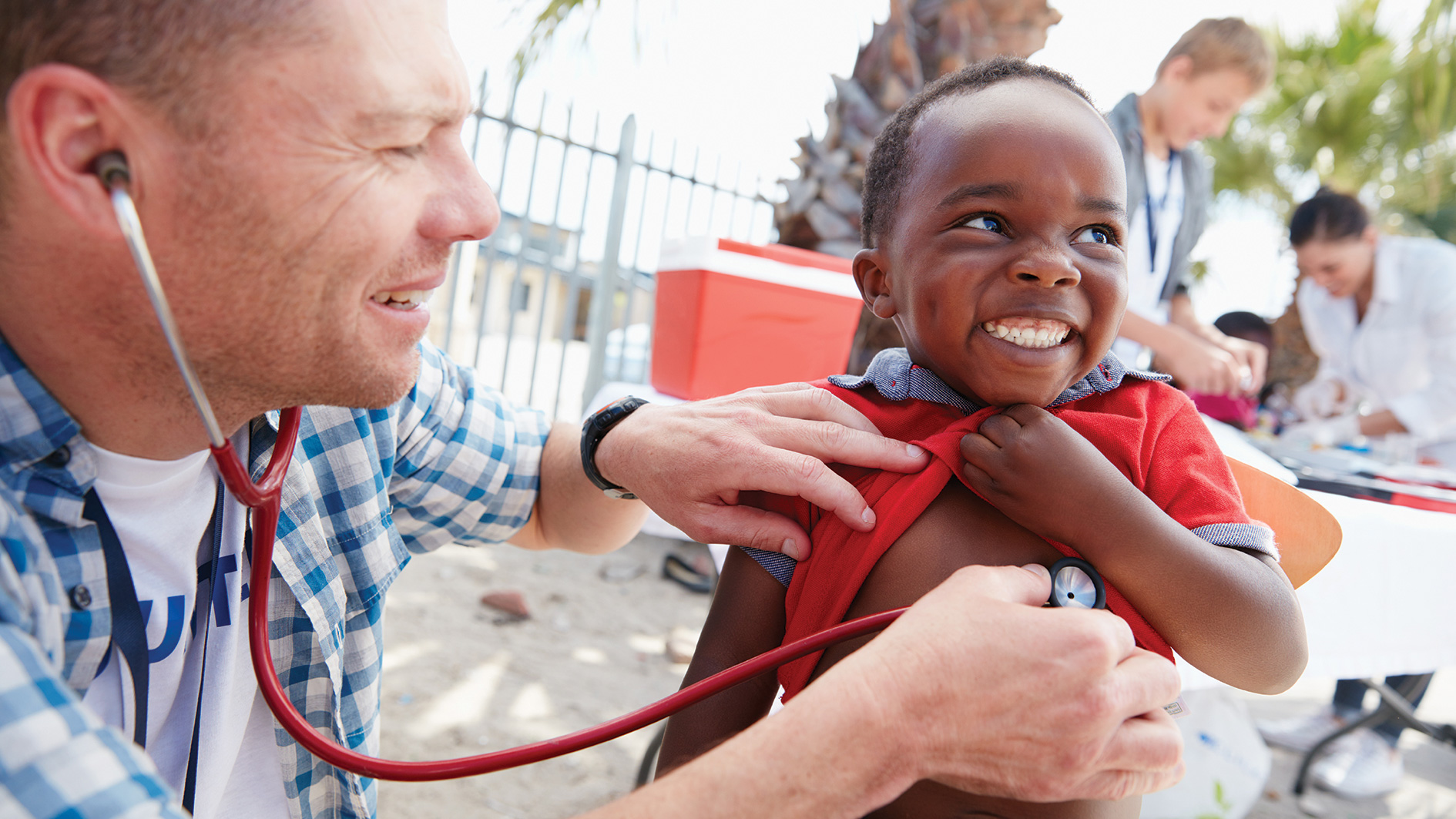
Matthew didn’t die last night, but he will.”
Just days before doctors delivered this grim news, in June 2012, Matthew Ames, an engineer from Brisbane, had woken with flu-like symptoms and a throat so sore that he visited a GP. Unbeknown to that GP, his sore throat was courtesy of the Group A Streptococcus bacteria, which is also responsible for impetigo, cellulitis, scarlet fever and, indirectly, rheumatic fever. The bacteria in Matthew’s “Strep throat” found a breach in his defences somewhere, and quietly slipped into his bloodstream. As he sought medical attention several times, and was repeatedly sent home with painkillers, the bacteria were multiplying rapidly, and his condition worsened daily. By the time he was admitted to hospital, the bacterial population coursing through his bloodstream had released large amounts of toxin which, in turn, had ruptured the membranes of Matthew’s red blood cells, rendering them useless. Muscle and tissue throughout his body had started to die, releasing additional toxins into his bloodstream, and his organs were shutting down. Within three days of his hospital admission, both Matthew’s arms and legs were amputated to improve his chances of survival from zero to one per cent.
With the incredible medical advances of the twentieth century, we tend to think we have the upper hand over infectious diseases like the toxic shock experienced by Matthew Ames. However, while this invasive Strep A infection had become virtually non-existent by the early twentieth century, it began re-emerging in the late 1980s. And there was more. As infectious diseases researcher Frank Bowden writes in Gone Viral: The Germs That Share Our Lives: “Australian Nobel laureate Macfarlane Burnet signalled ‘the end of infectious diseases’ in a number of his lectures and books in the 1970s. . . . So [in 1985] the appearance of a virus that seemed to slowly kill everyone who contracted it was as much a shock for the medical world as it was for the general population.”
He was, of course, talking about HIV/AIDS, the first of many epidemics of highly fatal infectious diseases that challenge our complacent sense of control.
Two decades later, in its 2007 World Health Report, the World Health Organization (WHO) noted that “infectious diseases are now spreading geographically much faster than at any time in history” and that, due to the billions of airline passengers each year, “an outbreak or epidemic in any one part of the world is only a few hours away from becoming an imminent threat somewhere else.” Further, they reported that new infectious diseases “appear to be emerging more quickly than ever before” with the existence of “nearly 40 diseases that were unknown a generation ago”.
The first outbreak of Ebola in human populations occurred in 1976, with small outbreaks occurring every year or two since then. To the mainstream world, they were insignificant; most people never heard about it. However, the 2014–2016 outbreak in West Africa had, according to WHO figures, “more cases and deaths . . . than all others combined”, with more than 28,000 cases in three countries, and more than 11,000 deaths. Eleven patients were treated in the United States, two of whom died, and two nurses caring for these patients contracted the disease but recovered. Now everyone knows the word Ebola. However, despite a new vaccine and improved treatments, a 2018 outbreak in the war-ravaged Democratic Republic of Congo perplexed international organisations, including the WHO, as they struggled to arrest its spread.

For all our knowledge and technology, and our attempts to control our environment, it would seem that, as journalist Elisa Gabbert observed, “it’s the microbes and insects that run things”. And humans have created the conditions for the surge in these illnesses. In addition to the impact of air travel, humans have provided crowded populations through which an infection can rampage. Changes in climate have increased the reach of diseases such as malaria, as warm tropical weather expands its boundaries. World Bank figures indicate that by 2050, malaria-bearing mosquitos will be part of life for 5.2 billion people. Already, malaria has moved into the cool highland regions of East Africa, where it has not previously existed. And our well-intentioned attempts to eradicate malaria in the mid-twentieth century selectively bred insecticideresistant mosquito populations. Scientist and trailblazing environmentalist Rachel Carson soberly noted that “the insect enemy has been made stronger by our efforts”.
fFinally, largely through the use of antibiotics in animals, humans have encouraged anti-microbial resistant bacteria, which now account for 700,000 deaths per year. Like the resurgence in invasive Strep A infection that began in the mid-1980s, tuberculosis rates also began increasing at that time—in large part due to antibiotic resistance. The WHO has identified these “superbugs” as one of the greatest threats to global health, labelling them a “global health emergency” and forecasting that they could kill up to 10 million people by 2050.
It’s a bleak picture, and can appear quite hopeless. As Colorado journalist Brian Calvert writes in his pensive High Country News article, grimly titled “How to Face the Ecocide”, “We humans are a disastrous species, as bad for the Earth as a meteor strike, and the realisation of this had established in me a new kind of sadness, a mixture of guilt and mourning for a loss yet to come.”
Similarly, the biblical worldview is that we live in a fundamentally broken world. An uptick in diseases and plagues should not be entirely surprising—some translations of the Bible warn of “pestilences” as one of the signs of the imminent end of the world (Matthew 24:7, KJV). Even before climate change and antibiotic-resistant bacteria, there was sickness and suffering. They are not new entities.

But there is hope. Christianity has at its heart the promise of a better world to come, a renewed earth in which God will wipe every tear from our eyes. “There will be no more death, or mourning or crying or pain, for the old order of things has passed away” (Revelation 21:4). This hope provides an underlying peace when we know that, even if our best efforts fall short, eventually everything will be put right.
Not that this should result in complacency or reckless disregard for our earth. God loves this planet. According to the Bible, He wanted humans to “rule over” the natural world (Genesis 1:26)—which is widely interpreted as asking us to be wise custodians. We were meant to look after the earth, not pillage it. In the book of Revelation, God is called upon to “destroy those who destroy the earth” (Revelation 11:18).
Indeed, Jesus’ example to His followers was to help whenever possible. In particular, He healed the outcasts, the unworthy, the untouchable. Generations of Christians since then have used their particular talents to be faithful to that calling.
Emeritus Professor Dr Warren Grubb is just one example. A deeply committed Christian, his research into antibiotic-resistant “Golden Staph” led to the development of world-leading policies to prevent its spread in hospitals. Through his research, episodes of “superbug” outbreaks have been contained, saving lives and reducing health care costs. In addition, Grubb has, for decades, spent his personal time educating people about healthy living and working hard on the ground to improve health outcomes for Aboriginal communities.
Matthew Ames and his family were grateful for the sliver of hope offered to them when faced with certain death. Incredibly, the removal of all four limbs saved his life, a decision Ames never questioned. Through the whole ordeal, his children witnessed “the value of fighting for the wellbeing of others, because they saw how hard medical specialists worked to find the answers.”
3 more plagues that threaten our species . . .
1. That high-pitched whine
It’s not just malaria that’s moving into more temperate regions as global temperatures warm. Other mosquito-borne diseases such as West Nile Virus, dengue fever, and chikungunya are showing up more frequently in the population centres of the USA, Western Europe and southern Australia.
—Scientific American/New Daily
2. Unstoppable fungus
Like antibiotic-resistant bacterial strains, the emerging fungal growth candida auris has so far shaken off every antifungal treatment thrown at it. Hospitals have been reluctant to go public about outbreaks, but the United States Centers for Disease Control has labelled it an “urgent threat”.—New York Times
3. Tread carefully
A recent outbreak of anthrax in Siberia alerted scientists and governments to a new threat. After thousands of years of immobility, ancient strains of bacteria are being released as permafrost thaws in the soils of the far north. The concern is that humans will have no natural immunity to the bacteria and viruses that may be released.—Scientific American
Julie Hoey is a qualified science and maths teacher and librarian. She lives in Mulbring, NSW, with her husband and tween daughter. Matthew Ames’ story is told in his memoir Will to Live (Penguin, 2014).









